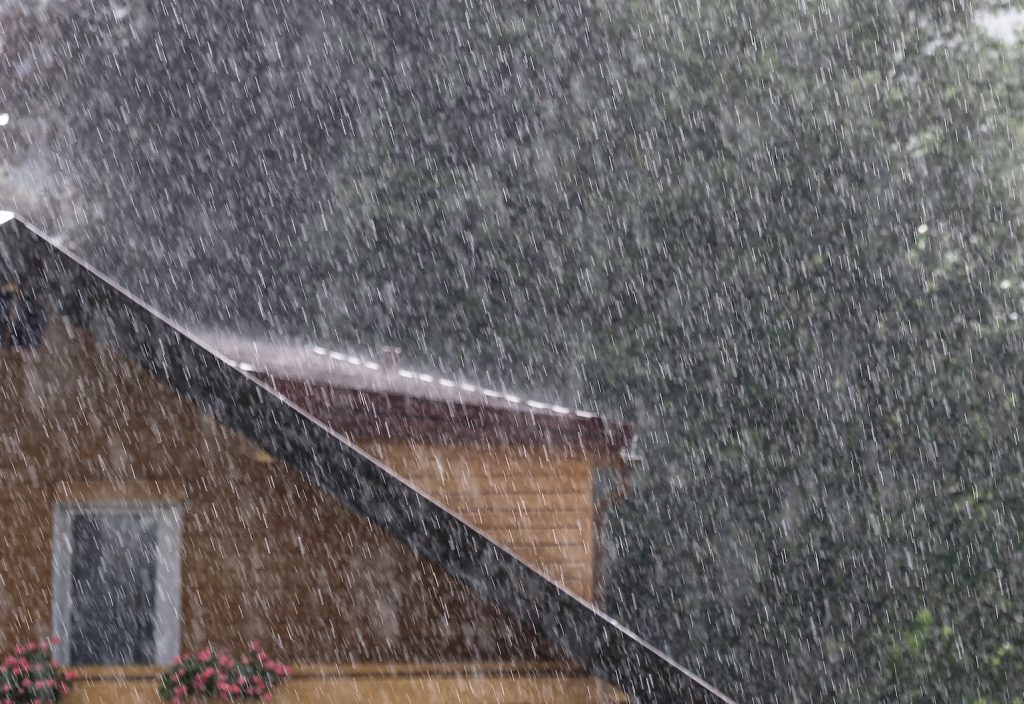Melbourne start-up Dam Buster aims to standardise hydraulic engineering for roof drainage.
One of the largest – and least recognised – problems in making Australian buildings more sustainable is water leakage from poorly designed, and poorly constructed, low-pitched metal roofs. The annual cost to building owners and insurers from leaking roofs is enormous, not to mention the human cost of time, stress and lost productivity.
Yet, too often, water leakage occurs due to defective or non-compliant roof drainage. One core problem with low-pitched metal roof drainage is simply box gutters. Its mere mention sends shivers down the spine of building professionals, particularly architects and builders; but this need not be the case, says Rowan Gregory MIEAust, CPEng, Civil Engineer and Technical Manager, of Melbourne start-up, Dam Buster.
Why roof drainage is such an industry headache
“Most roof drainage problems can be put down to two factors,” Gregory said.
- Absence of a detailed roof drainage design at the building permit stage, particularly for residential properties.
- Limited ‘Deemed-to-Satisfy’ (‘DtS’) solutions for box gutter overflow devices, as provided in Australian/New Zealand Standard 3500.3 Stormwater drainage code.”
“In the first instance, roof drainage should be co-ordinated with both the architecture and structure. All too often, it is left up the roof plumber, who becomes involved around framing stage – by which time the ship has sailed, and finding a compliant solution can be difficult, if not impossible, without costly changes to the design and delays. Roof plumbers often do the best they can, however, unfortunately may ultimately install a non-compliant solution.”
The second factor comes down to a lack of significant improvements or innovations to the design of box gutters for at least 25 years. Meanwhile, modern building designs increasingly incorporate flat metal roofs with box gutters. But change of direction in box gutters is still not permissible as a DtS Solution. “This is where Dam Buster’s designs come in”, says Gregory, “with products like our Side Outlet and Rainhead combination devices.”
“The most significant advance in roof drainage design is the Rainhead. Firstly, it incorporates a box gutter receiver at the rear of the rainhead, which facilitates a good seal between the rainhead and the box gutter (a common point of water leakage or failure); secondly, it features a vertical overflow chute with a very high overflow capacity.”
While an ‘open-fronted’ DtS rainhead from AS/NZS 3500.3 can be used, it is usually aesthetically unacceptable, and for that reason, rarely used. Instead, a ‘Ned Kelly’ type rainhead – with an overflow opening in the front – is typically adopted. This type of rainhead has been used until recently, but Gregory says that this is a misinterpretation of the rainhead depicted in the Installation code for metal roof and wall cladding, which he refers to as “Victorian-centric”. However, on 30 July 2021, the standards were amended to remove the need for the ‘Ned Kelly’ type rainhead.
Passion project
The idea for Dam Buster’s Rainhead began with the frustration felt by Melbourne forensic plumbing investigator Russell Kirkwood by the never-ending list of flooded buildings he came across with non-compliant box gutter roof drainage systems. In nearly all cases, there was no satisfactory means of repair. After extensive discussions with his business partner, Chartered Loss Adjuster David Pockett, the first Rainhead was made in 2016 as a ‘passion project’.
“It incorporated all the requirements of Australian Standards and roofing handbooks into a single, innovative and aesthetically pleasing device,” says Gregory. “Although rainheads have been around for centuries, just about every rainhead made in Australia has been non-compliant or unfit for purpose.”
This is where Rowan Gregory and fellow forensic engineer Richard Kingston first came in. “Our job was to fine-tune the design and ensure it was able to meet the Australian Standards. Our tests showed the Rainhead performed brilliantly from a hydraulic perspective.”
The ‘Dam Buster’ name came from the similarities between the new rainhead and the weirs that serve large scale water reservoirs and dams, which must be capable of safely overflowing huge volumes of water. It was launched in Australia in late 2017. In 2018 it took out an Australian Good Design Award in the Hardware and Building category.
“After the Rainhead was received so well, we designed an entire range of fully-integrated, box gutter drainage products, such as a free flow sump, side outlet and elbow devices,” said Gregory.
“All Dam Buster devices operate under ‘free flow’ during both the primary and overflow conditions compared to the often complicated design process for the DtS ‘Sump and Side Outlet’ and ‘Sump/High Capacity Overflow’ devices. Both of these are hydraulically complex in the overflow condition, since backwatering must occur to allow the water level to rise and overflow through the side outlet duct or into the overflow chamber of the device. This allows for a simple selection process based on allowable flow rates, in litres per second, for a box gutter.
“It will take time for the industry to adapt,” says David Pockett, Managing Director of Dam Buster. “You can’t change such a large industry overnight, with so many players – architects, engineers, building surveyors, builders, roof plumbers, building owners, and insurers. But by standardising hydraulic engineering, we want to become the Lego of roof drainage.”
